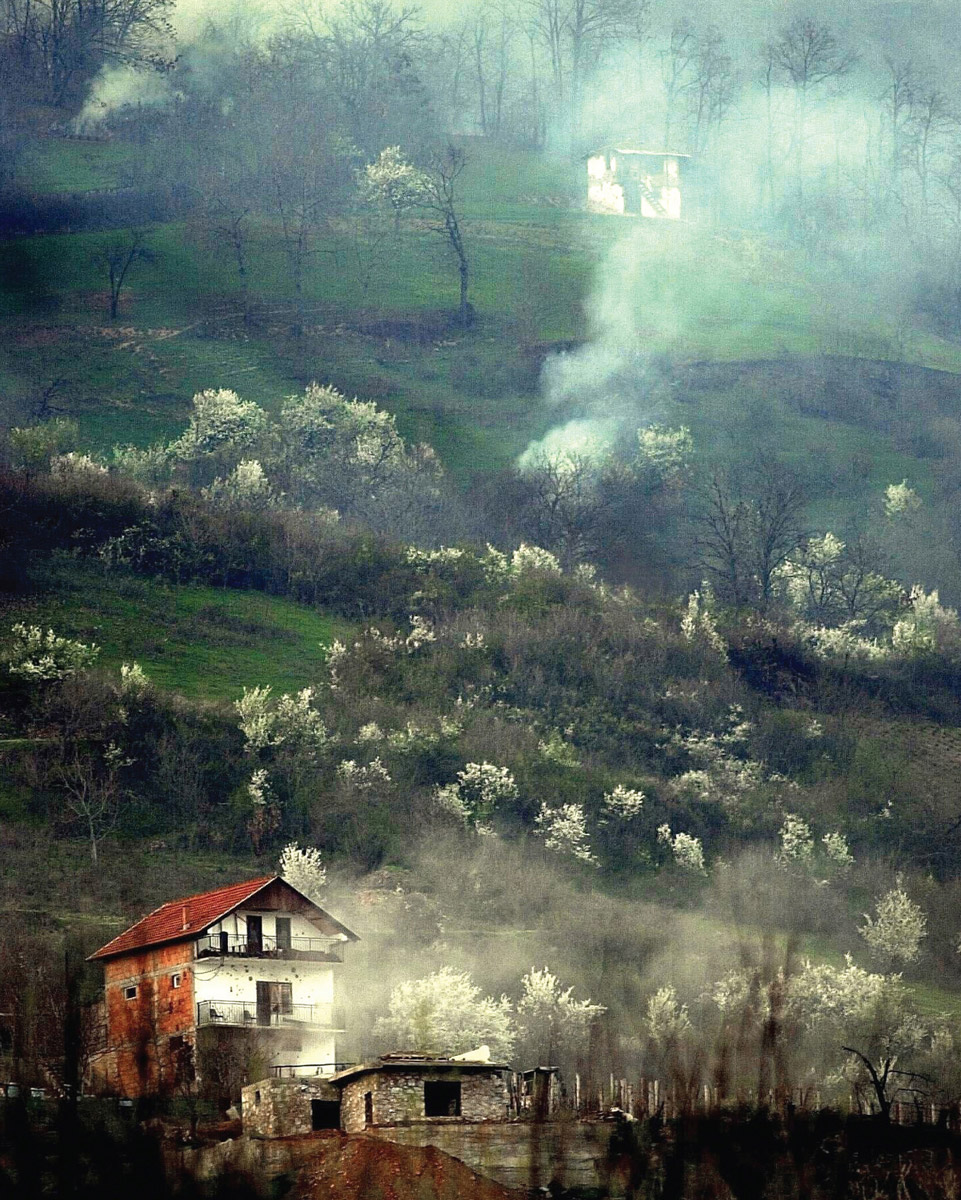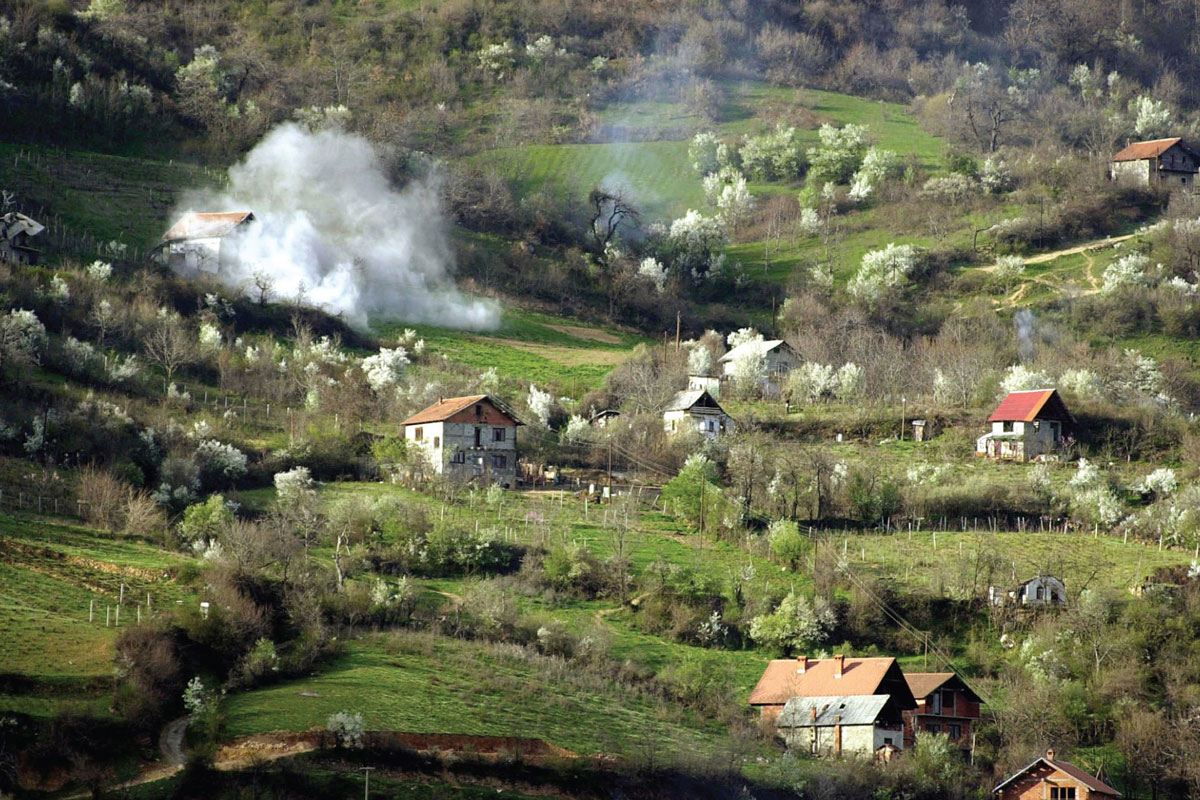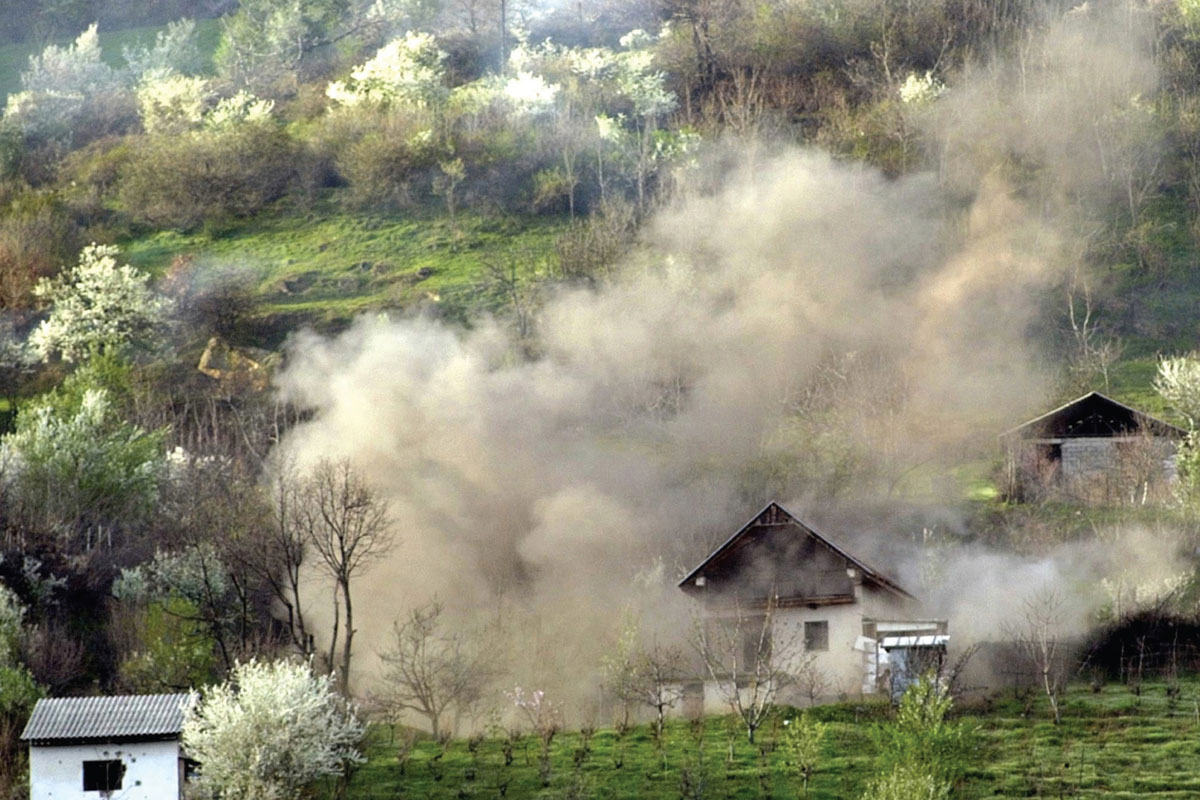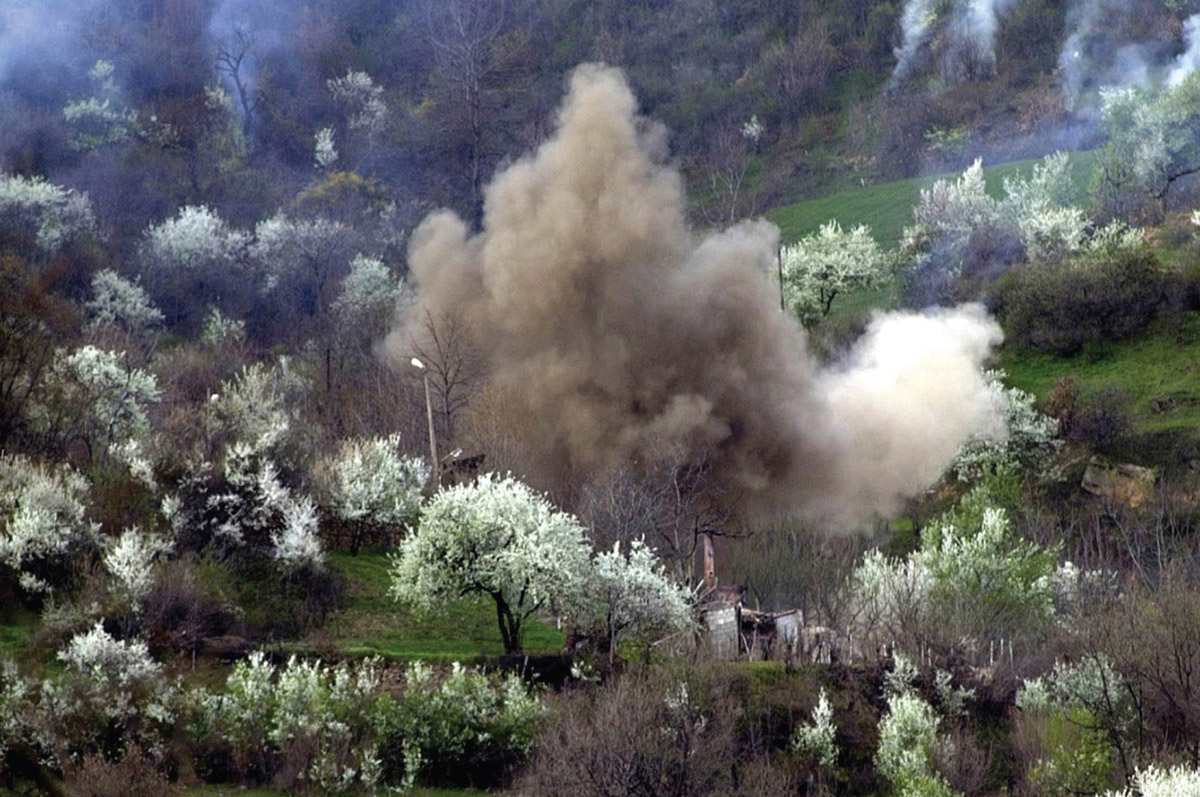Artist Project / Collateral Damage
Oh, what a lovely war
Gianni Motti

The Swiss-Italian artist Gianni Motti is an expert in well-staged, disturbing pictures. As a performance artist, he has slipped into roles ranging from an ambassador at a United Nations Congress to the twelfth member of a soccer team playing a game live on TV. But the images presented here are not the result of a performative adventure as such. Nevertheless, they have the same effect of disturbing a context into which they are supposed to fit. One of these contexts is landscape photography; the other, war photography. The disturbance is a rather silent statement, a non-event. This is where part of the images’ ability to fascinate emerges—the more silent they are, the more spectacular they are. They designate a crisis that is well known and often discussed in various forms, but remains unresolved.
For the project presented here, Motti contacted Agence France-Presse and requested images of the Balkan conflict that the agency was unable to sell. Among other categories, he found certain photographs designated as “too aesthetic.” He bought the copyright for the series for a symbolic amount, framed them as if they were classical landscape photographs, and entitled the series Collateral Damage. The pictures lack the conventional narrative structure of most photojournalism; their elegant compositional forms—a blossoming cherry tree beside a cloud of smoke, for instance—would hardly seem to suggest the catastrophes of war. The force of these images therefore originates in their aesthetics. They are staging neither a tragedy nor showing pure banality, but instead only talking about themselves.
It is through pictures that events come into being; thus the actual territorial battlefield can be said to exist in the realm of images. War is today the ultimate spectacle that lies at the core of mass media economy. Consequently and paradoxically, images have become the total fetish of truth: conflicts like the one in Chechnya do not exist in the Western world’s public consciousness or political life as long as there are no pictures available in the media.
But the driving force of today’s media economy is the suppression of suspicion; suspicion about what the picture is not actually showing, about the preconditions of its presentation. As in daily experience, it seems impossible to find the supposed reality hidden by the images. Landscape is as much a scenario as war. Both tend not only to hide their subject, the actual territory, but to transform it into a territory of symbolic exchange. The designation and occupation of one’s imagination, and the simultaneous production of related images, constitute what one calls a reality—or, perhaps better, a media-reality, but one that nevertheless produces social relations as reality does.
In a discussion about the TV images of the Balkan wars, the French film critic Serge Daney noted the gap between the obvious desire for war in the eyes of those being interviewed in a specific report from Bosnia, and the commentary that accompanied the pictures: “But we don’t actually look at these television images, we listen to the commentary which tells us not what we are seeing but what we should be seeing in principle.... The tragedy is in the commentary, never in the pictures.” This is also one of the concerns of Motti’s project. In the end, these images evoke the collapse of mass media economy and the habitus of aesthetic economy. They are collateral damage in the framework of these economies, and Motti’s gesture is nothing more than a demonstration of this, leaving everything else to his viewers, alone with their suspicions and the conditioned search for patterns of meaning.
—Anselm Franke



Spotted an error? Email us at corrections at cabinetmagazine dot org.
If you’ve enjoyed the free articles that we offer on our site, please consider subscribing to our nonprofit magazine. You get twelve online issues and unlimited access to all our archives.